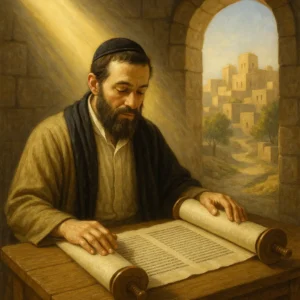This teaching begins with the cities of refuge—six mandated by the Torah and an additional forty-two where the Leviim lived and taught. These cities, unlike the camp surrounding the Mishkan, were not inherently sacred. In fact, they often hosted those fleeing after causing accidental deaths—individuals who, both practically and spiritually, may have been distant from holiness.
Yet these very cities became centers of spiritual life. Why? Because the Leviim, the educators of the nation, lived among them. Their role was not to remain close to the Mishkan but to bring Torah outward—into everyday settings and into contact with people in need of growth and guidance. The sanctity of these places came not from proximity to the Mishkan, but from the Torah taught within them.
This idea echoes the insight of the Kesef Mishneh and the Shelah, who both reflect on why Avraham Avinu was chosen, even though there were prophets greater than him. They explain that Avraham actively spread Torah. He didn’t wait for people to come to him—he went out to them. His greatness was in bringing holiness to others, wherever they were.
This is the powerful message of Parashat Masei: we don’t need to live next to a Mishkan to bring sanctity into our lives. When we choose to learn Torah, to live by it, and to teach it, we transform our homes and communities into sacred spaces. Holiness can travel with us—through our decisions, our actions, and our dedication to Torah.

